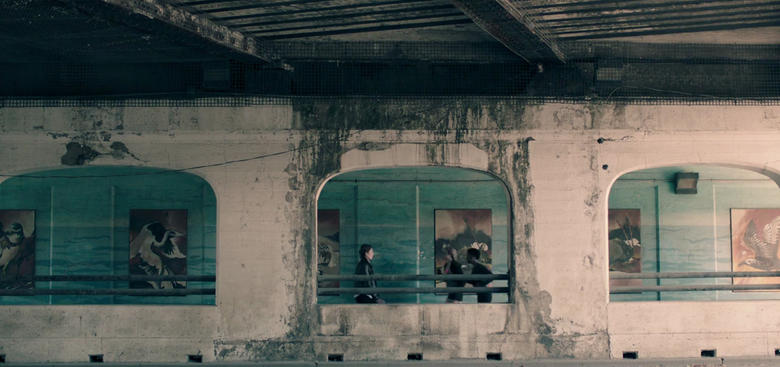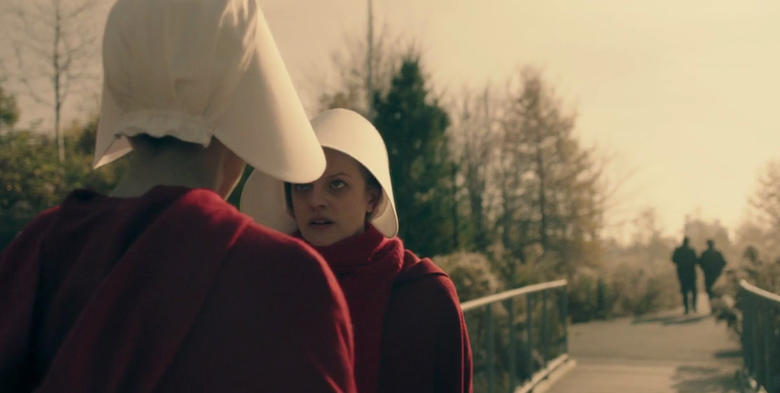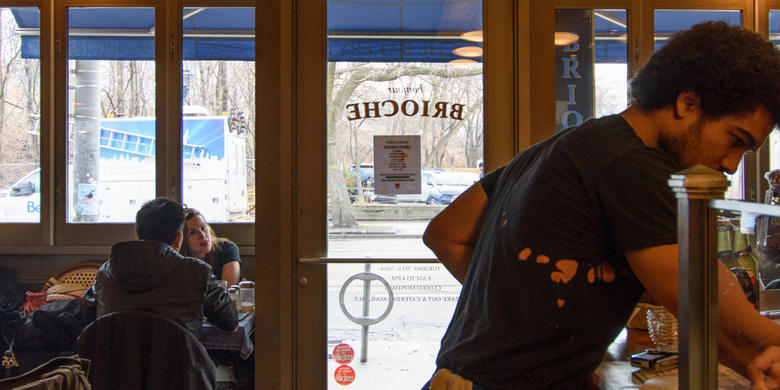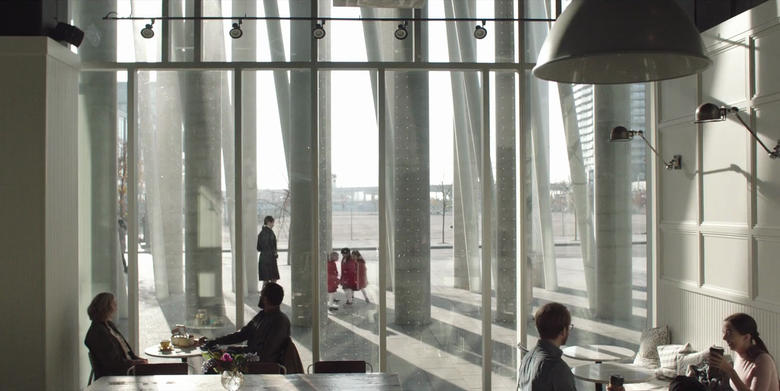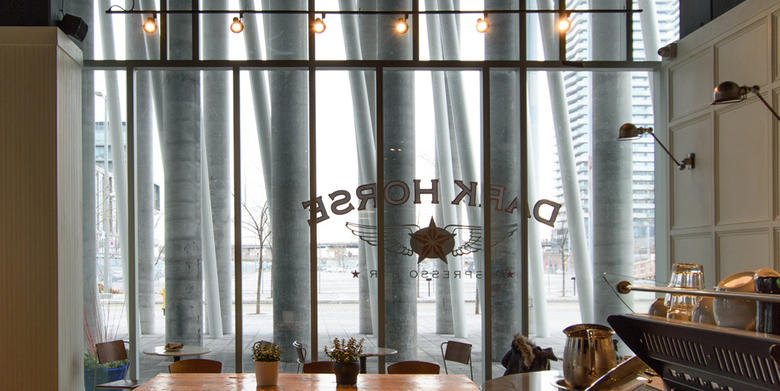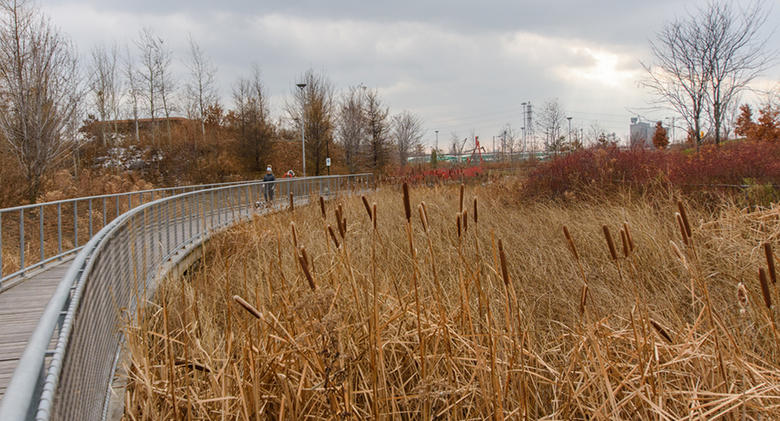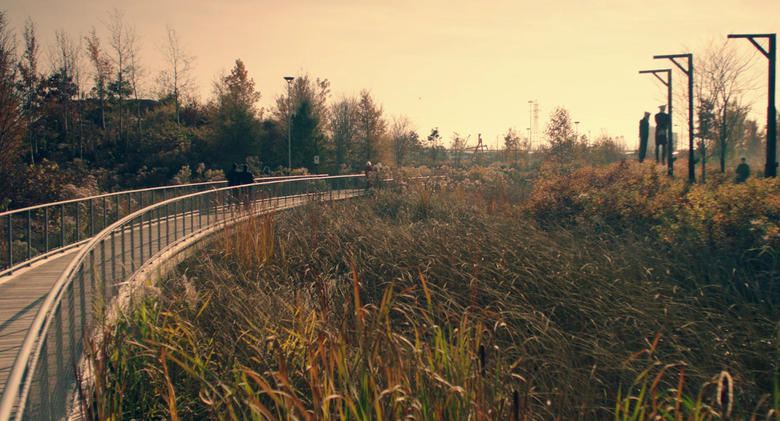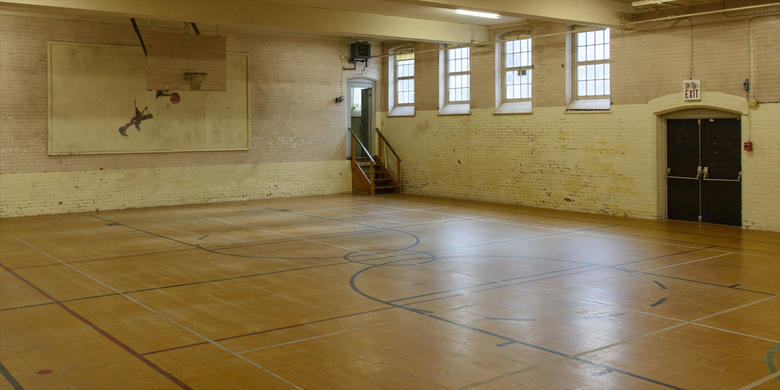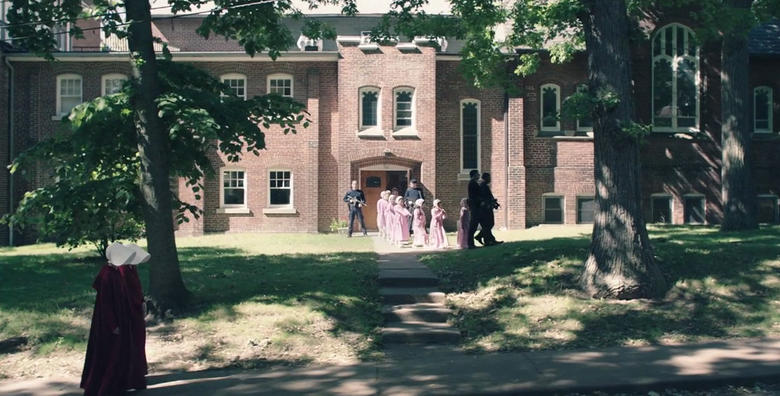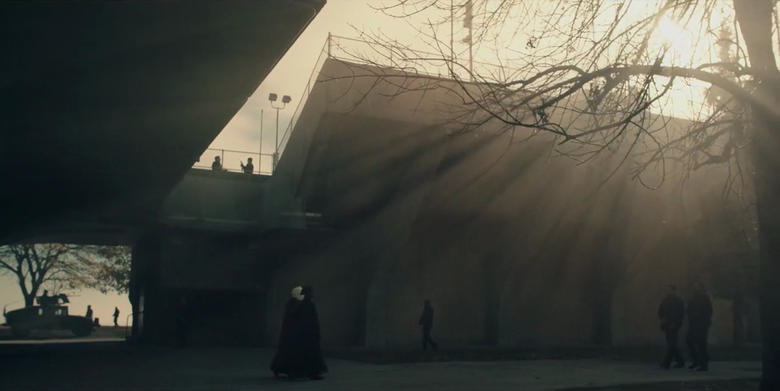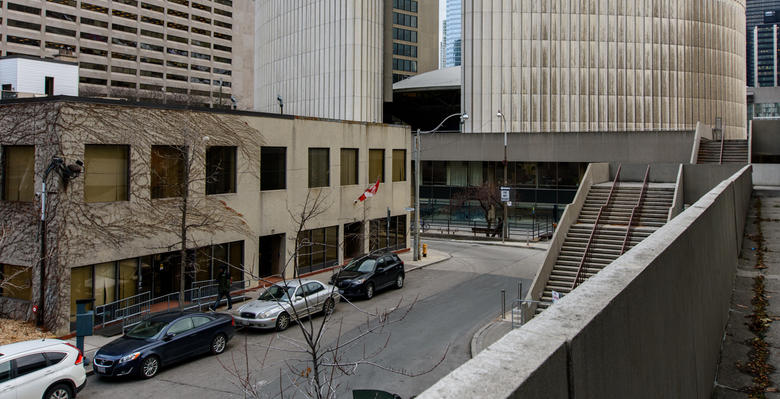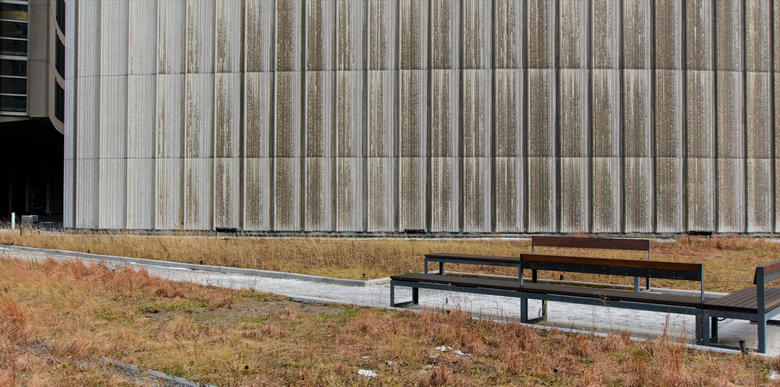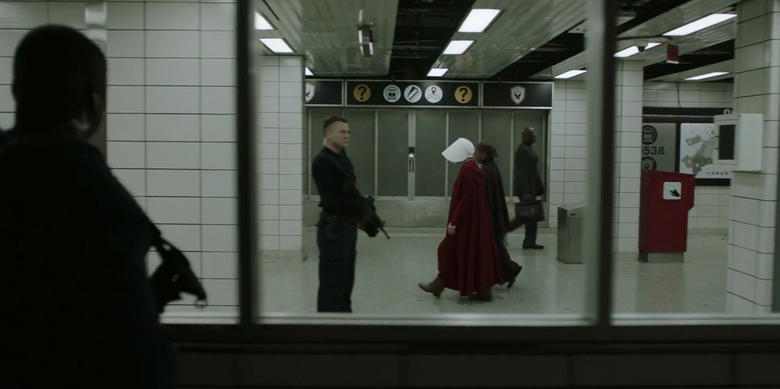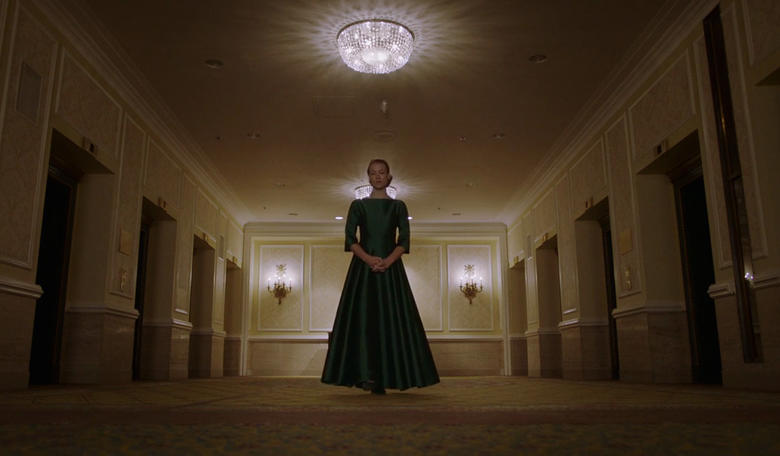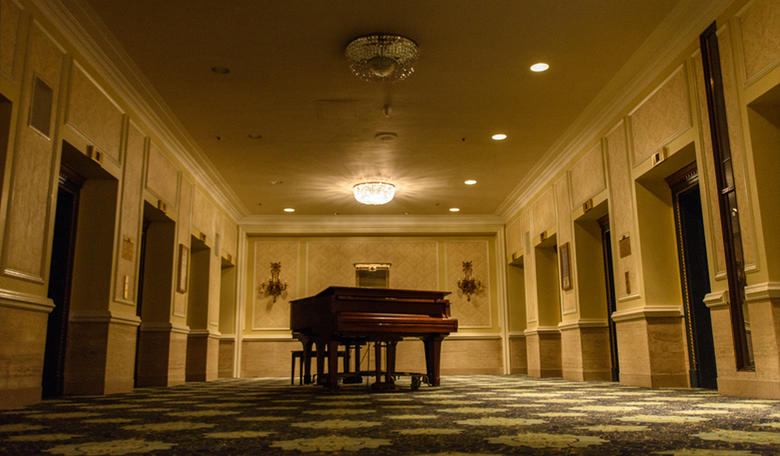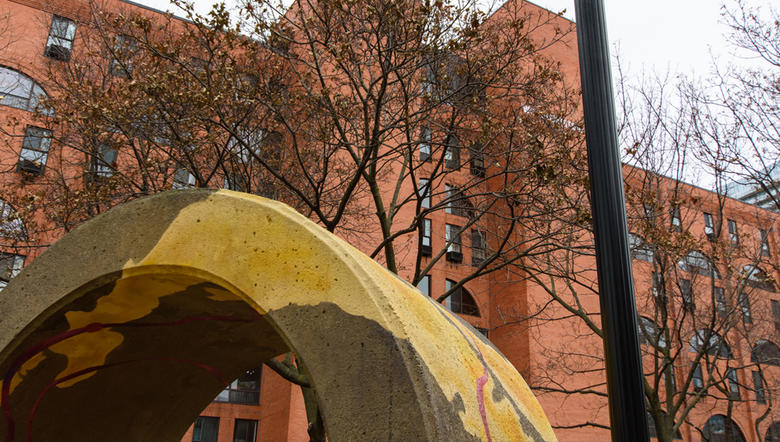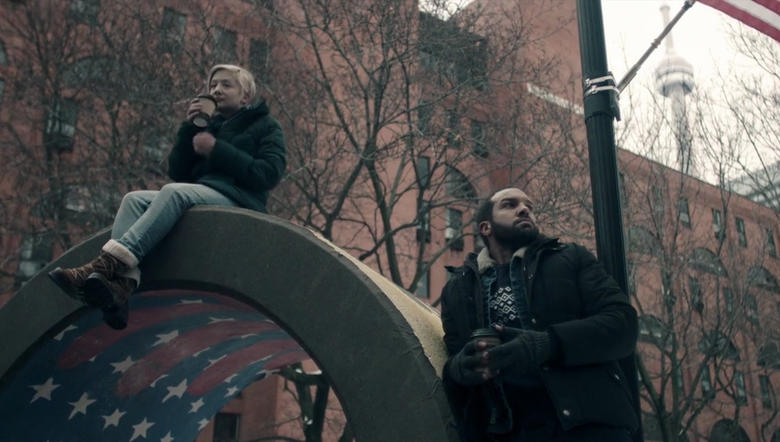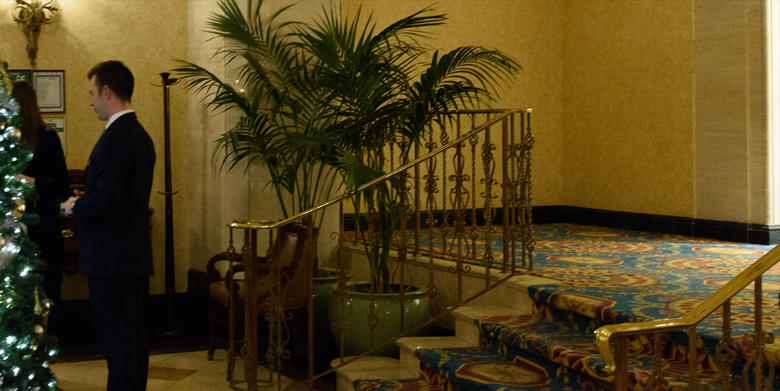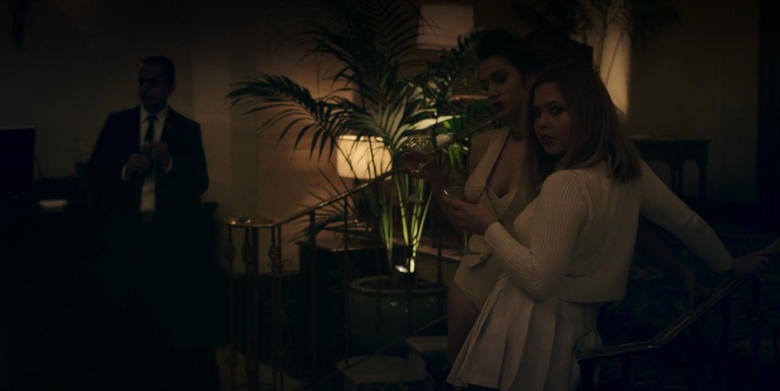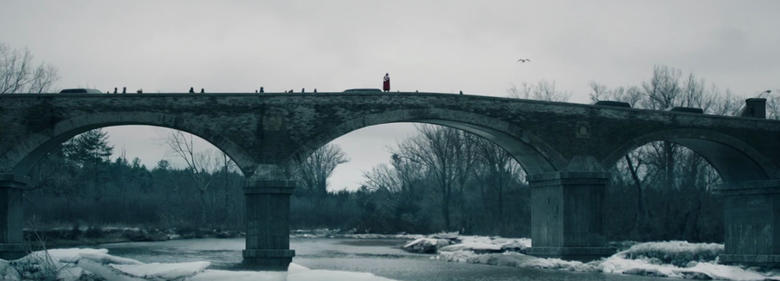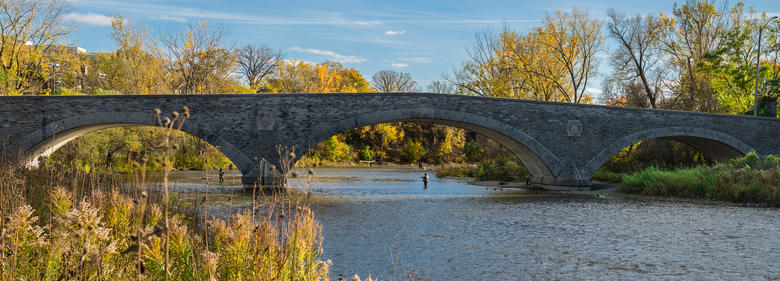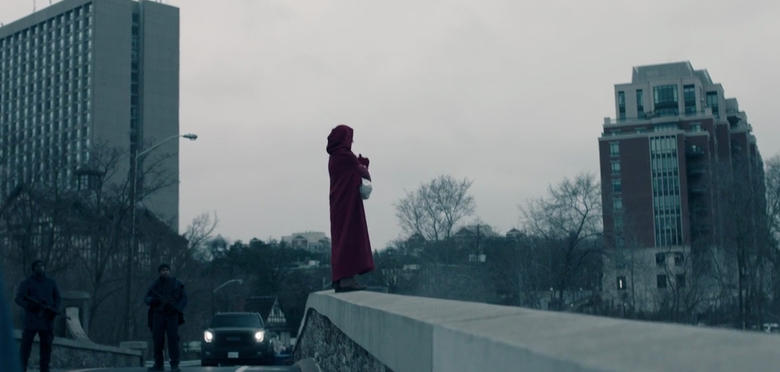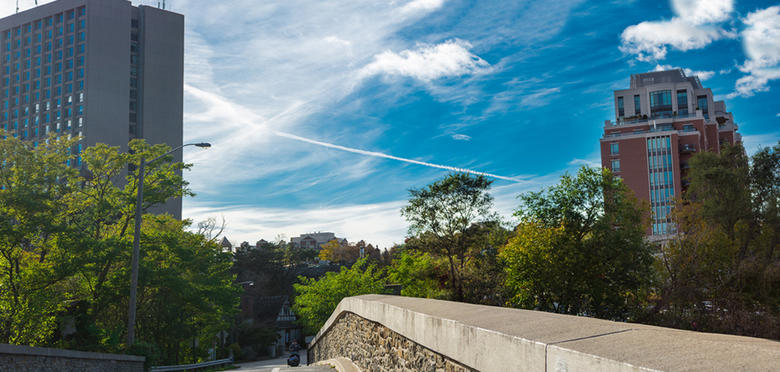↑ Move slider to see the difference!
Writer and activist Margaret Atwood is already a household name to most people who have grown up in Canada and with Hulu's latest adaptation of her 1985 novel about a pseudo-Christian fundamentalist and totalitarian state born when human fertility rates plummet, it aims to open up for a whole new generation. The timing couldn't be more apt with the current concerns about the direction of the United States—The Handmaid's Tale speaks a warning about what happens when people are too complacent and allow their government too much power in troubling times.
There have been adaptations in the past but Hulu and Atwood took on this project to try again and, although it was conceptualized prior to the 2016 presidential election in America, it became shockingly poignant when it aired in 2017 and has often been used in critiques, protests, and commentary about the country's trajectory. This time they shot the entire series in Canada, making use of Toronto's mid-century brutalist architecture for the dystopian "Boston", and calling upon Hamilton and Cambridge to fill in the rest. The latter two cities house the majority of the series in the future, setting traditional and picturesque scenery with misery, slavery and death— especially making use of Victorian, Georgian and Gothic Revival architecture to cast a sense of austere foreboding in every scene.
Already snagging 8 Emmys in 2017 and 2 Golden Globe awards in January 2018, The Handmaid's Tale paints a dark and terrifying vision of what the future, and in essence, Toronto itself, could look like if all the right things go even just a little bit wrong.
A Tale Of The East End
Toronto is most recognizable on-screen when we're graced with landmarks or popular neighbourhoods, most of which centre around the downtown core. The Handmaid's Tale is unique in that many of the locations in the city actually reside east of Yonge Street, if not east of the Don River itself. Unless you're from the east side, they may seem foreign to you, but rest assured, they're here.
The non-linear narrative structure of the TV series allows both current (future) stories as well as flashbacks from the "time before", that is, the time before the totalitarian government of Gilead when our main protagonist and slave, Offred had a husband, child, career, and was allowed simple things like reading and having a bank account—both of which are forbidden for women in the new state.
One of the first glimpses we get of the "normal" times is in Episode 3 when she is jogging with her best friend, Moira, along the distinct and trendy Leslieville strip of Queen East. After passing under the bridge at Degrassi St. (the namesake of another quintessentially Canadian television production), the girls stop in at Bonjour Brioche bakery on the corner. It's during that visit when we learn that all women's bank accounts have been cancelled. And don't worry, the lovely staff who work there in reality are nothing like the nasty barista in the TV show!
Interestingly, the show—like the book—makes a point of showing that the movement towards the totalitarian government was not characterised by sudden, brute military force, but rather a very gradual stripping of women's and minority rights, with every decision being justified for the country's own good, like it was with martial law for the sake of protecting the country from terrorists. Moira pointedly says, after the government takes full advantage of its power, that "Maybe there never were any terrorists." If this episode doesn't make you feel even a twinge of discomfort or, at best, sends a shudder down your spine, you are not paying enough attention to our real world and that art, in fact, is said to reflect reality.
In another flashback in Episode 5, Offred, or June as she used to be known, and her husband are on a date in another Toronto coffee shop in the Canary District, also known more widely as the West Don Lands, named The Dark Horse Espresso Bar, which is a brightly lit and quiet coffee date spot in reality as well.
The same area is featured in this episode when, in current times, Offred and Ofglen are walking just down the road from Dark Horse through a park and see the dead hanged bodies of people who resisted the government - generally doctors, LGBT people, priests, and rebels. Dog walkers may especially recognize the area as Corktown Common, just south of Underpass Park on the shores of the Don River. It's a beautiful little oasis in the concrete condo district that played host to the Pan Am Games in 2015.
In Episode 1 we are introduced to the so-called educational system that is responsible for breaking down and indoctrinating innocent, fertile women into surrogates and sex slaves for the powerful elite men of the theocratic state of Gilead. It's a scathing indictment of how fragile women's rights in modern society still are and how easily they can slip away when a community is faced with serious hardship and one that rings particularly true in current countries where women are still oppressed under violent regimes that degrade them as people in their own right.
Dressed in plain red with white bonnets, The Handmaid's Tale uses this uniform to symbolize the red of fertility and blood, the plainness as subservience, and the white bonnets as blinders to the outside world, both to isolate women from each other and to stop others from viewing them—because they (and we as women) know already that if women are allowed to connect and draw strength from each other, the handmaids will have the power.
The entire purpose of their "re-education" is to disconnect them from themselves, incite deep distrust in each other, and have them entirely reliant on the imposed system instead. Often, the sharp red contrasts against the dull greys and muted browns that populate the naturalistic dystopian version of the world both Atwood and Bruce Miller, the teleplay writer and creator, designed.
If you take a trip down Queen East, you'll eventually come across The Church of St. Aidan near the eastern edge of Toronto's seasonally-popular neighbourhood of The Beach. The flashback takes us to June's first day in the Red Center, a euphemism for the "school" and torture prison where young women are held against their will until they become obedient, subservient handmaids.
As all places of worship except the main religion of Gilead have been destroyed, it is somewhat ironic to have chosen St. Aidan's as the place of evil when in reality, the church is anything but. In their gymnasium, we see the classroom where the girls learn about the cause of human infertility, according to the theocracy of Gilead: environmental pollution, STDs, promiscuity, homosexuality, and "immoral" lifestyles—all of which affect only women. We know this is a lie perpetuated by the men of Gilead to retain their moral superiority and man-given "divine rights".
Atwood herself graced St. Aidan's as she appeared in a cameo in this episode. Blink and you'll miss the author slapping her own protagonist during one "shame training" session.
In Episode 4, St. Aidan's is used again for the Red Center and their Memorial Lounge serves as a dormitory. In another episode, St. Aidan's pops up again as an exterior where Offred sees a number of small children, as she is always looking for her little daughter who had been kidnapped by the government when she was captured. Expect the Red Center to emerge again in flashbacks during season 2 as the location has been used just this past autumn for more scenes!
Also in a flashback in Episode 4, June and Moira conspire to escape from the Red Center and execute it flawlessly. Donning disguises, they set out on a journey which takes us across Toronto. They briefly stumble upon an imposing militarized structure which is, in reality, merely the Donald D. Summerville pools at the base of Woodbine Avenue in the Beach. You may recognize it if you spend any time strolling the boardwalk from Ashbridge's Bay to Kew Gardens.
Dystopian Downtown
Further into their escape, June and Moira end up at one of Toronto's most popular landmarks—new City Hall and Nathan Phillips Square. Many parts of the area are used to display the militarized nature of Gilead with black-clad soldiers with automatic weapons on every corner. We follow June and Moira around the back of the complex, and up the back stairs to the green roof, one of City Hall's lesser-known attractions.
On the roof, they are stunned by the sheer numbers of hanged people adorning City Hall's exterior walls. Apparently, Cambridge isn't the only place for lynching rebels and putting them on grotesque display! Further into their walk, and coming around the back of the podium where our city council meetings are held, there is an art & book-burning bonfire—a staple of dictatorships and totalitarianism.
Quickly moving from City Hall, a cut shows June and Moira boarding a subway train at no place other than the oft-used Bay TTC Station. At first, they're above ground where we pass every day but soon they're down in Lower Bay, which is only accessible to the public on special days like Doors Open.
Various other locales feature in flashbacks, including Metro Centre across from the distinctive CBC building on Front Street where June is thrown out of her office when news comes in that all women must be fired from their jobs and they first become aware of the new Gilead army choking city streets. There is something to be said about seeing our safe Canadian streets adorned with such an unfamiliar and weaponized presence.
Back in the current dystopian timeline, the Fairmont Royal York Hotel plays a large role. This location is almost ubiquitous in the film and television industry of southern Ontario. In episode 6, international delegates visit Gilead to assess how they are managing the infertility crisis and a gala is held in honour of the handmaids although that is a charade to convince a visiting government that there are not egregious human rights violations happening.Of course, the grand ballroom at the Royal York is the highlight.
Just upstairs, we are graced with an iconic shot of Serena Joy, Offred's pious and abusive mistress, in a Virgin Mary blue dress and framed by the Royal York's chandeliers as almost a Christ-like figure in halo. After all, she is the anti-feminist Lady Macbeth behind the rise of Gilead and seen as a saviour to some of the most privileged classes, at the expense of the subjugation of so many others.
Episode 7 is primarily a vehicle to explore what the world is outside of June's experiences. We're shown the life of rebels and runaways, those who managed to escape and survive despite the weight of an oppressive death militia always at their heels. Eventually, we're shown Canada where the terrifying regime south of the border has not taken hold, even despite such close proximity and we see Atwood's own optimism about Canada.
At one point, and at the behest of creator Bruce Miller, the on-screen titles show the location as "Little America, Toronto, Canada" which is a futuristic neighbourhood of Toronto itself, better known now as the St. Lawrence Market area. This particular location is David Crombie Park on the Esplanade where the editing team specifically added the CN Tower to the background to make sure everyone was aware that this is Toronto; Toronto, known internationally for its diversity now, is a safe haven from the totalitarianism and fear sweeping other countries even in a dystopian future.
Interestingly, at another flashback during the same episode, June is in a car, driving around the city, and those with a keen eye can see the street sign reads Adelaide St. E. out the car window as they go up none other than Toronto Street.
Various alleys and streets off Adelaide are used in other episodes as well, especially as the back entrance into a den of vice for the male officers of Gilead to indulge in drinking alcohol and sex with infertile women who are essentially a different, more glamorous form of sex slave than the handmaids called Jezebels. The bar that her master, Commander Waterford, secretly takes Offred to in Episode 8 is once again, the Fairmont Royal York's moody and luxurious Library Bar.
From the mansions in Oshawa to Gilead's governmental offices at Exhibition Place, and Coronation Park in Oakville that acts at the killing grounds for handmaids, the GTA doubles for many variable locations. One of the most dramatic moments in the latter half of the series happens in the penultimate episode where, going mad from the torture and grief, fellow handmaid known in the time before as Janine climbs atop a bridge with her newborn baby, planning to kill herself and the child. For anyone who regularly visits Etienne Brulé Park or the Old Mill area along the Humber River, this bridge may look familiar - The Handmaid's Tale did indeed use Old Mill stone bridge but CGI helped give it some extra height to make Janine's precarious situation feel far more real.
There is something grim, hollow, and haunting about the cinematography of The Handmaid's Tale that makes the series feel like more than merely a piece of dystopian fantasy but rather an omen that makes it seem timelessly relevant. Atwood has always said that the events and concepts in her book, and brought to life onscreen here, are based entirely on real things that have happened throughout history. These are not new ideas; they are plausible ones based on what humans have done already. Toronto being used as the backdrop for this sinister future as well as the haven to save us from it is a wonderful example of the plasticity of the city as well as passing on a little hope that perhaps we will always be a place to call safe.
But don't just watch this to pick out familiar sights; watch it because it needs to be seen. It needs to be absorbed and its chilling warnings need to be heeded. There is a reason Atwood's aggressively and unapologetically feminist book has remained as relevant today as it was when she wrote it over 25 years ago and there is a striking reason Hulu's exceptionally powerful adaptation resonates so loudly right now.
There is nothing comforting or nice or gentle about this series, and it's certainly not a date-night type of light entertainment. Backed with invigorating master performances from the whole cast and a bone-chillingly perfect soundtrack, it lays out in brutal honesty the potential paths that are available to us and asks if this is really the one you'd like to take.
This is a story of the will to survive. It is an understated yet darkly riveting exploration of one woman's slow, almost imperceptible rebellion in order to achieve that through connectedness with others, and a resolute inner strength. That, despite all the horror against women and merciless tragedy, is where the pure beauty of The Handmaid's Tale is most apparent:
Nolite Te Bastardes Carborundorum.
VLVLLR





